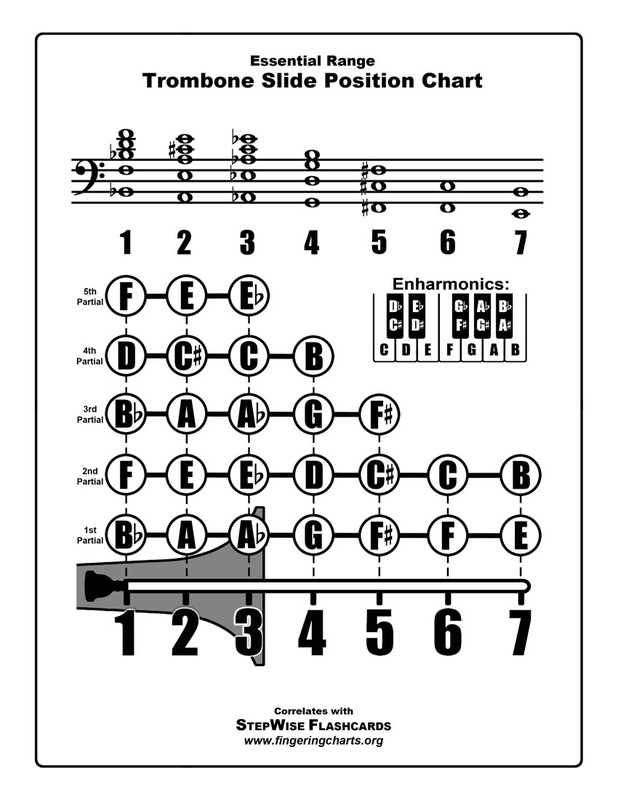How Do Trombonists Know Where the Notes Are?
Ahoy, fellow music enthusiasts! Step aboard the brass ship as we set sail into the melodic seas of the trombone – that glorious instrument that adds a touch of soulful resonance to any musical ensemble. As a proud trombonist, I'm here to unravel the mystery of how we, the brave wielders of the slide, navigate the vast ocean of musical notation.

Picture this: the glint of brass catching the stage lights, the distinct glissando that can make hearts soar or break, and the enigmatic chart filled with dots, lines, and circles. For many, deciphering sheet music is like reading an ancient map, and for us trombonists, it's no different. So, let's embark on this musical quest, exploring how we trombone players navigate the notes and make magic happen.
How Do Trombonists Know Where The Notes Are?
The trombone has 7 positions on the slide. Trombonists just have to memorize the distance of those 7 positions and then fine tune the pitch with their ears.

Here are some slide charts

If you are interested in learning music check out our Music Lessons in Denton.
As a seasoned trombonist who's danced the brass dance in various musical settings, from jazz ensembles to orchestras, I can tell you – it's not just about hitting the right notes. It's about understanding where those notes are, and the unique challenge of the trombone lies in our trusty slide, the key to unlocking the melodic treasure trove.
First things first, let's talk about the trombone's range. We trombonists are blessed with a broad spectrum of notes, from the bellowing lows that can shake the foundations to the soaring highs that pierce the heavens. And how do we navigate this vast range? Well, it's all about the slide, that telescopic wonder that extends and contracts, giving us access to a myriad of pitches without the need for pesky valves.
Now, the beauty of the slide lies in its continuous range of motion. Unlike our valved counterparts, we trombonists have the luxury of gliding seamlessly between notes, creating those silky-smooth glissandos that define the trombone's unique voice. But, of course, with great power comes great responsibility, and mastering the slide requires a keen understanding of where each note resides on the musical map.
In the world of sheet music, we trombonists rely on different staff notation as our brass brethren. The bass clef is our home, and those five lines and four spaces hold the key to the musical kingdom. Each line and space represents a different pitch, and as we trombonists traverse the staff, our slide becomes the vessel guiding us through this musical terrain.
Let's talk technique – the art of position playing. The trombone is a unique instrument in that each position corresponds to a specific harmonic series. Without delving too deep into the physics of it all, just know that as we extend or retract the slide, we access different harmonic overtones, essentially giving us a new set of notes in each position.
Navigating these positions is where the rubber meets the road for a trombonist. It's about muscle memory, keen ears, and a touch of finesse. Picture it: I'm in the middle of a fiery jazz solo, the rhythm section is grooving, and it's my time to shine. As I navigate the labyrinth of positions, hitting each note with precision, it's not just a physical act but a dance of intuition and musicality.
The trombone's versatility is a testament to the player's ability to seamlessly switch between positions, creating a fluid and expressive performance. From the silky legato lines in a lyrical ballad to the punchy staccatos in a big band chart, the trombone's range and the slide's flexibility give us the tools to paint a vast sonic canvas.
But how do we trombonists know where each note is on the slide? It's a question I often get asked, and the answer lies in a combination of factors. First and foremost, it's about ear training. We develop a keen sense of pitch, enabling us to hear a note and instinctively know where to position the slide to produce that specific sound. It's a skill honed through hours of practice and countless repetitions.
Beyond ear training, visual cues also play a role. While we're immersed in the world of sheet music, we often use our eyes to guide us through the intricate patterns of notes. The position of a note on the staff, combined with our knowledge of the trombone's harmonic series, helps us determine the optimal slide position for each note.
Let's not forget the importance of muscle memory. The repetitive motion of extending and retracting the slide becomes second nature over time. It's a physical connection between our hands and the instrument, and as we practice scales, arpeggios, and various melodic exercises, our muscles memorize the positions required for different notes.
Now, here's where it gets interesting – the concept of alternate positions. As trombonists, we're not confined to a single position for each note. Due to the nature of the harmonic series, certain notes can be played in multiple positions. This flexibility allows us to choose positions based on the musical context, slide range, and overall efficiency.
Navigating the vast array of alternate positions requires a deep understanding of the instrument and a sense of experimentation. It's not uncommon for trombonists to explore different slide positions to achieve specific tonal colors or execute tricky passages with ease. This flexibility adds another layer to our expressive arsenal, allowing us to tailor our sound to fit the musical landscape.
In the realm of jazz improvisation, the trombone's ability to effortlessly glide between notes becomes a powerful tool. The slide, acting as a musical paintbrush, allows us to create dynamic and nuanced phrases. It's a form of musical storytelling where the journey between notes is just as crucial as the notes themselves.
As I reflect on my trombone journey, from early days of awkward slide positions to the fluid motion that defines my playing today, I can't help but marvel at the instrument's unique challenges and rewards. Navigating where the notes are isn't just a technical feat; it's a musical adventure filled with discovery, creativity, and the joy of bringing a brass sea of notes to life.
If you like this check out our article: Did Miles Davis Play Saxophone?
